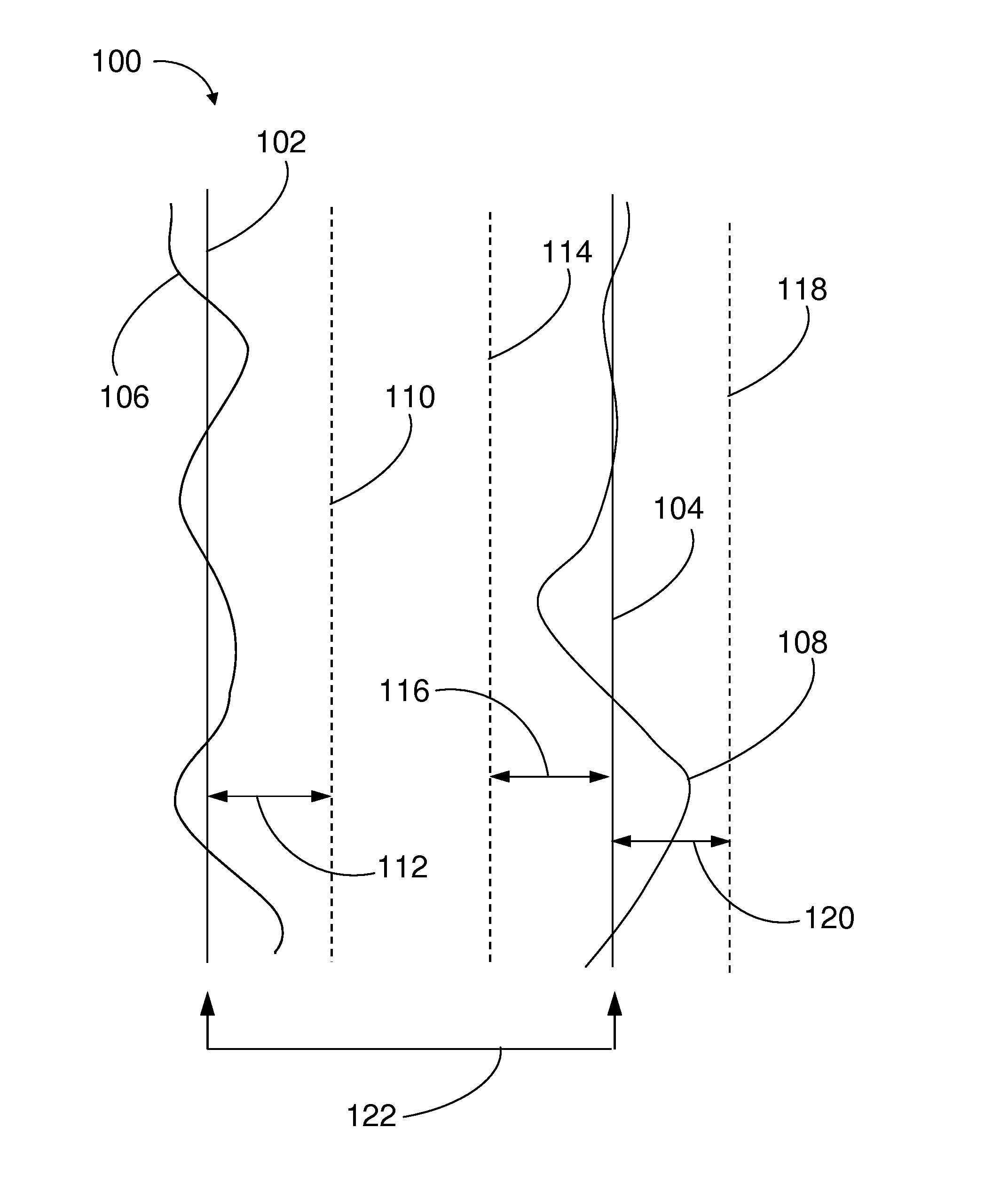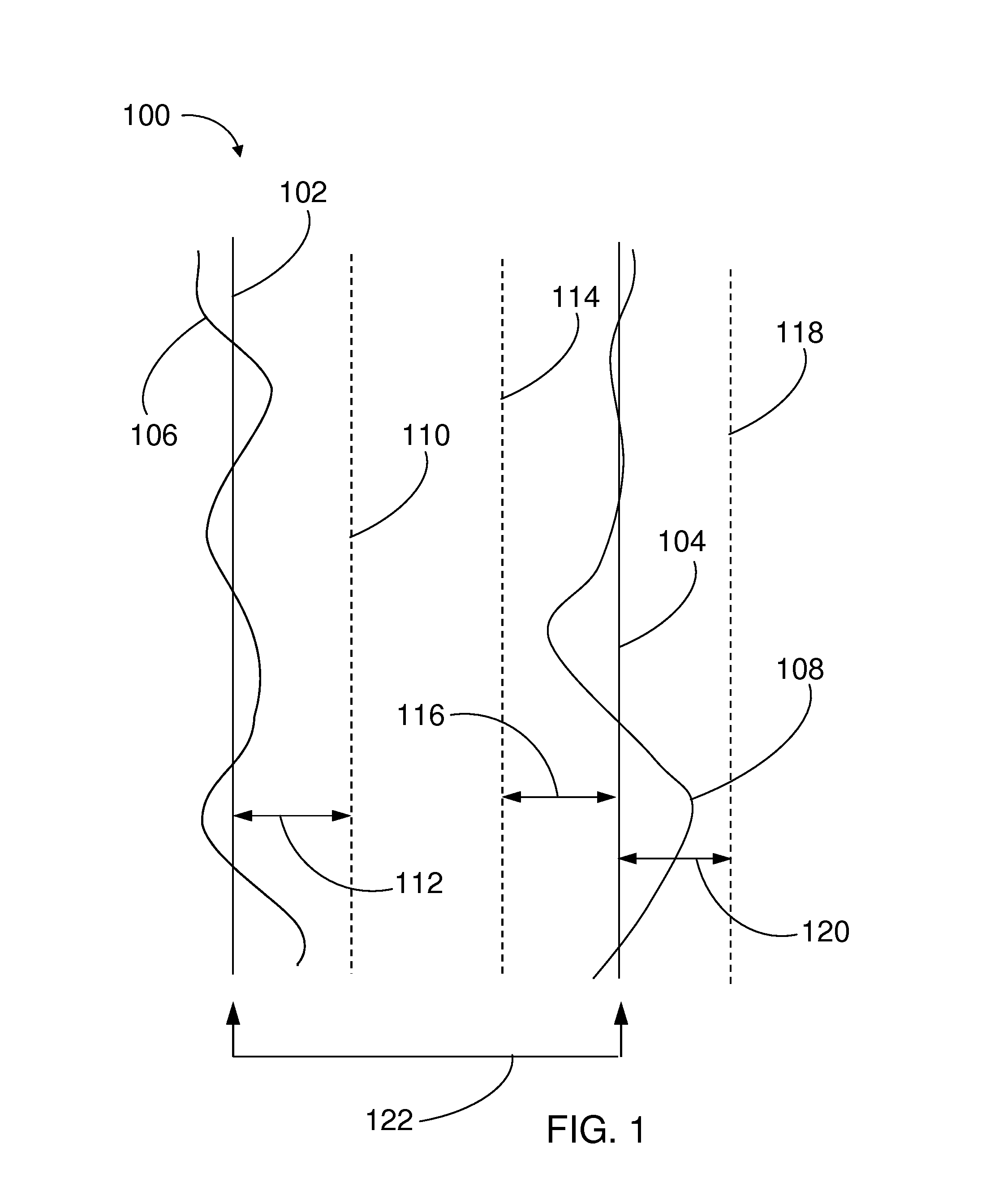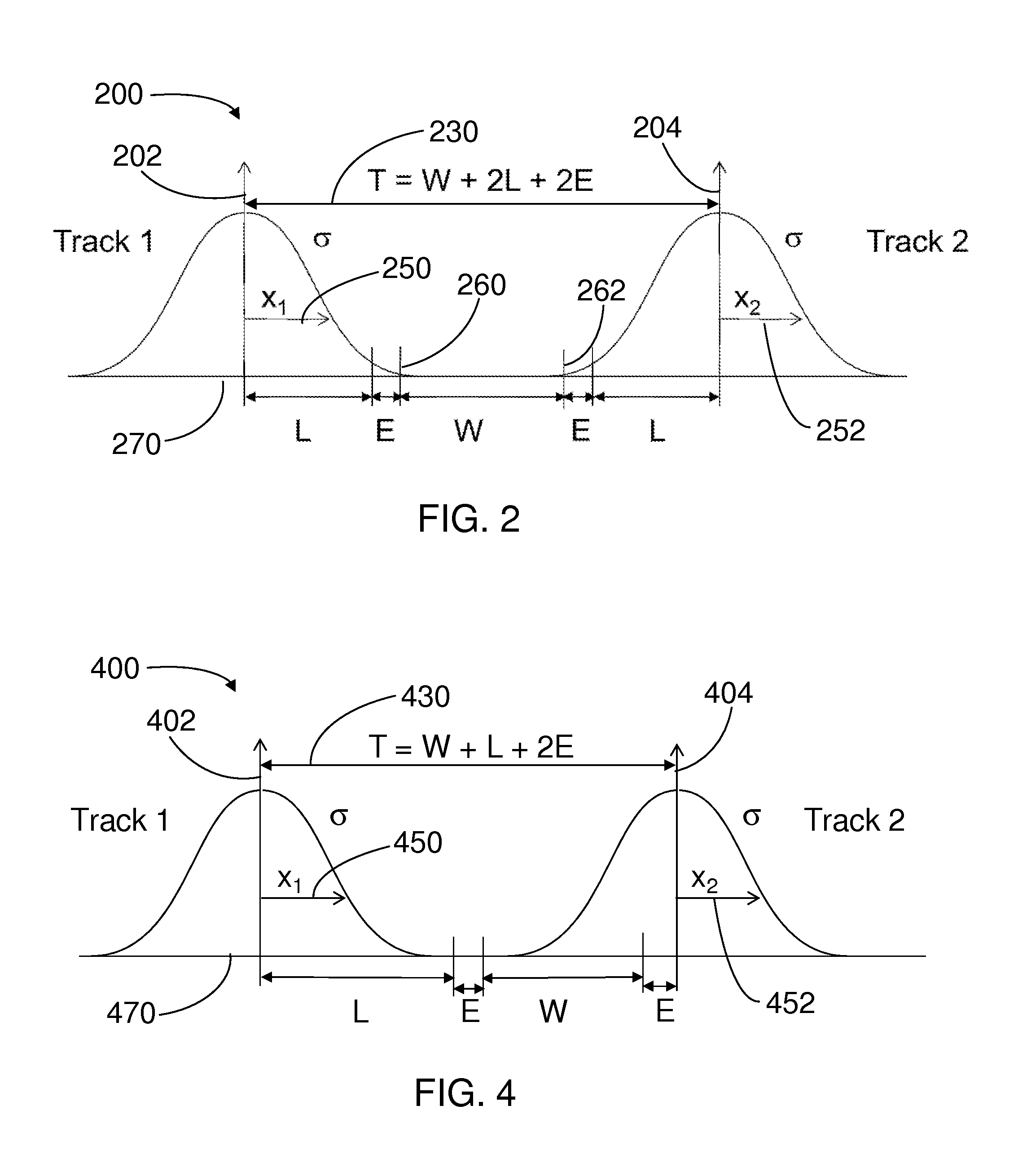Method and structure for improving performance and storage density in a data storage device
a data storage device and performance improvement technology, applied in the field of data storage devices, to achieve the effect of improving data storage density, improving data storage, and reducing the average track-to-track spacing
- Summary
- Abstract
- Description
- Claims
- Application Information
AI Technical Summary
Benefits of technology
Problems solved by technology
Method used
Image
Examples
first embodiment
[0040]In the present invention, the FFWI Factor α may have a different value for different physical zones on the storage medium. As discussed above, for E-regions, the trade-off is between performance and HE rates. This is applicable to any cache or temporary storage region where data is first written, typically as fast as possible to avoid delaying the host device. Tuning of the optimal α value may easily be performed on-line. For I-regions, the trade-off is between performance and higher TPI (denser storage). This is applicable to any region where data is finally stored and efficiency of storage is more useful (maximize TPI). Although on-line adjustment is possible, off-line tuning may be most practical.
second embodiment
[0041]In the present invention, in an operational vibration (“op-vib”) environment, a trade-off between performance and HE rates (similar to that used in writing E-regions) is applicable. As PES prediction rates are affected by op-vib, the FFWI Factor α may be adjusted to lower HE rates, or at least maintain HE rates in the face of increased vibration-induced head motions.
Data Storage Device Operation for E-Regions in Operational Vibration Conditions
[0042]FIG. 7 is a graph 700 similar to graph 500 in FIG. 5, except under large speaker vibration environment in a laptop computer while playing loud music. As a result of this op-vib environment, the ranges for the FFWI Factor α are shifted to lower values, typically over the approximate range 1.2≦α≦1.56 (compared with the range 1.37≦α≦1.66 in the absence of loud noise). This shift to lower α values compensates for the increased head motion induced by the op-vib environment since lower α values cause the FFWI method of the present invent...
PUM
| Property | Measurement | Unit |
|---|---|---|
| rotation | aaaaa | aaaaa |
| track widths | aaaaa | aaaaa |
| track widths | aaaaa | aaaaa |
Abstract
Description
Claims
Application Information
 Login to View More
Login to View More - R&D Engineer
- R&D Manager
- IP Professional
- Industry Leading Data Capabilities
- Powerful AI technology
- Patent DNA Extraction
Browse by: Latest US Patents, China's latest patents, Technical Efficacy Thesaurus, Application Domain, Technology Topic, Popular Technical Reports.
© 2024 PatSnap. All rights reserved.Legal|Privacy policy|Modern Slavery Act Transparency Statement|Sitemap|About US| Contact US: help@patsnap.com










